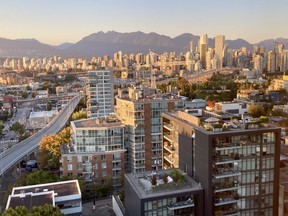Most B.C. homeowners didn’t see a big change in their assessments this year. Experts say it’s mostly because of high interest rates, but there are other factors at play. Read more.

For the second year, assessed property values across B.C. have remained relatively stable, with a few exceptions in smaller communities, according to the B.C. Assessment Authority.
In all the authority’s regional offices, assessors found most homeowners can expect their home values to have changed between plus or minus five per cent, regardless of property type, which to lead surveyor Bryan Murao speaks to the impact of higher residential mortgage interest rates.
“Sometimes, you’ve seen trends throughout the Lower Mainland, or maybe throughout the province, vary from property type to property type, or region to region,” said Murao, B.C. Assessment’s area assessor for the Lower Mainland. “When everything feels this similar, it feels like it probably is more attributed to interest rates, just because that impacts the real estate market as a whole.”
B.C. Assessment sends out property assessments every year in the first week of January, more than 1.12 million for 2025, which reflect the market value of real estate as of July 1, 2024.
Municipalities use those values to set the mill rates that establish property taxes, but they’re also an after-the-fact snapshot of real estate market activity.
In Metro Vancouver, Burnaby saw the most notable assessment increase in the typical single detached home, which was up four per cent to top $2 million. Vancouver, however, remained flat at $2.2 million, Port Coquitlam was up two per cent to $1.4 million as was the District of North Vancouver at $2.1 million.
Richmond’s typical single detached home was up one per cent to $1.9 million, and Coquitlam, Port Moody and New Westminster were also up one per cent to hit $1.7 million, $1.9 million and $1.6 million, respectively.
In Surrey, however, it was down three per cent to just under $1.6 million.
In Greater Victoria, the District of North Saanich was the only community to see a change beyond the three per cent range for single-family homes, with a five per cent drop.
On Thursday, Housing Minister Ravi Kahlon, speaking to provincial measures to limit short-term vacation rentals, said government policies on restricting Airbnbs, upzoning single family lots and reforming development financing have decreased the cost of housing.
However, University of B.C. academic Tom Davidoff said if anything, prices in property markets now are likely lower, based on his anecdotal comparison of current listings to the assessments, and “the biggest issue is the ongoing high interest rates.”
“Prices didn’t come down much when interest rates rose, but the increase in interest rates just obliterated affordability,” said Davidoff, director of urban economics and real estate at the UBC Sauder School of Business.
“The cost of owning a house, really, (considering) the interest rate minus growth, is just unambiguously worse than it was a couple of years ago.”
Davidoff said that some of the policy changes that the province have introduced to curb short-term rentals have probably had some impact, particularly for the condo presale market, but those markets have also been hit by Canada’s reduced immigration targets.
Across Metro, the biggest variances were in Delta, where the typical strata assessment declined by two per cent to $759,000 and Langley Township, where it was down two per cent to $764,000. Surrey’s was also down two per cent to $696,000.
Strata assessments include townhouses and condo apartments.
“The fundamental value of real estate here has just been really whacked by changes to immigration policy,” Davidoff said. The reduction in the number of foreign-student visas has helped bring down rents, he said, while reduced permanent resident numbers will limit growth in household formation.
“Added (housing) supply has helped, but a lot of the provincial policies are yet to really have an effect because this isn’t a very active building environment today,” Davidoff said.
Planner and academic Andy Yan said that in Metro in particular, and for particular types of properties, observers also can’t discount the influence of poorly performing real estate markets elsewhere in the world.
“In this case (in Metro the market) seems to have plateaued,” said Yan, an associate professor and director of the City program at Simon Fraser University. “But then I think you have to look at what’s happening in Asia, because we have a global marketplace here in Vancouver.”
Yan also cautioned using assessments to gauge markets, since they are six months behind, and equated them to “weather reports” that don’t necessarily reflect B.C.’s housing climate, to make an analogy.
Yan said the climate remains difficult in part because of the “decoupling of housing costs with local incomes.”
When politicians refer to policies reducing housing costs, they’re often referring to small percentages off extremely unaffordable prices.
“Half of unaffordable is still unaffordable,” Yan said. “We are far from affordability in our time.”
Elsewhere in the province, flat trends continue in the southern Interior and in northern B.C., where single-family home values dropped by one per cent in Kelowna and West Kelowna, while Prince George saw a three per cent rise.
Among the few communities that saw values spike by double digits were Williams Lake and Wells, where single-family home valuations rose 10 per cent, while valuations spiked 13 per cent in Tumbler Ridge.
With files from Alec Lazenby, Postmedia News and The Canadian Press